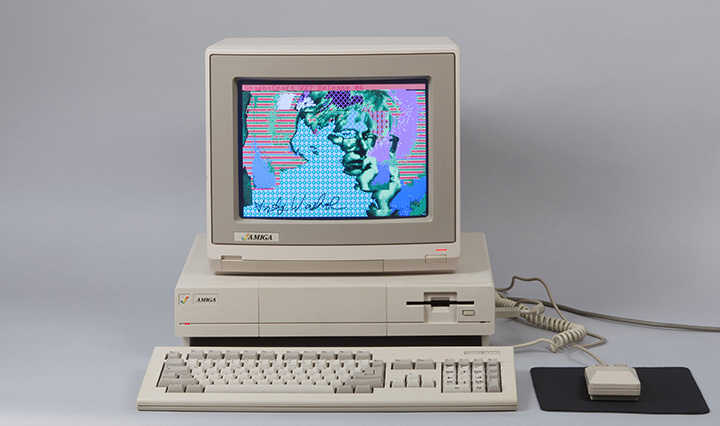
Recreation of Andy Warhol’s Amiga, based on original objects found in the museum’s archives.
In the summer of 1985, Warhol was given his first Amiga 1000 home computer by Commodore International and enthusiastically signed on with the company as a brand ambassador. For their launch, Commodore planned a theatrical performance, which featured Warhol onstage at Lincoln Center with rock ’n’ roll icon and lead singer of Blondie, Debbie Harry. In front of a live audience, Warhol used the new computer software ProPaint to create a portrait of Harry. He later made a series of digital drawings including a Campbell’s soup can, Botticelli’s The Birth of Venus, and flowers. The video of the launch performance and these early computer-based artworks are a testament to Warhol’s engagement with and embrace of new technology.
Although Warhol spoke about the desire to print these images and distribute them as artworks in an interview in Amiga World, this wish never came to pass. In 2014, we collaborated with Carnegie Mellon University and Carnegie Museum of Art to extract the saved files from Amiga floppy disks held in our archives collection. In the Pittsburgh premiere of the Amiga installation, visitors can experience Warhol’s digital drawings on an interactive model created by The Warhol in collaboration with local design studio Iontank.
Join in the conversation and post your thoughts and reactions to the Warhol and the Amiga project using #warholAmiga on social media.
Image Gallery
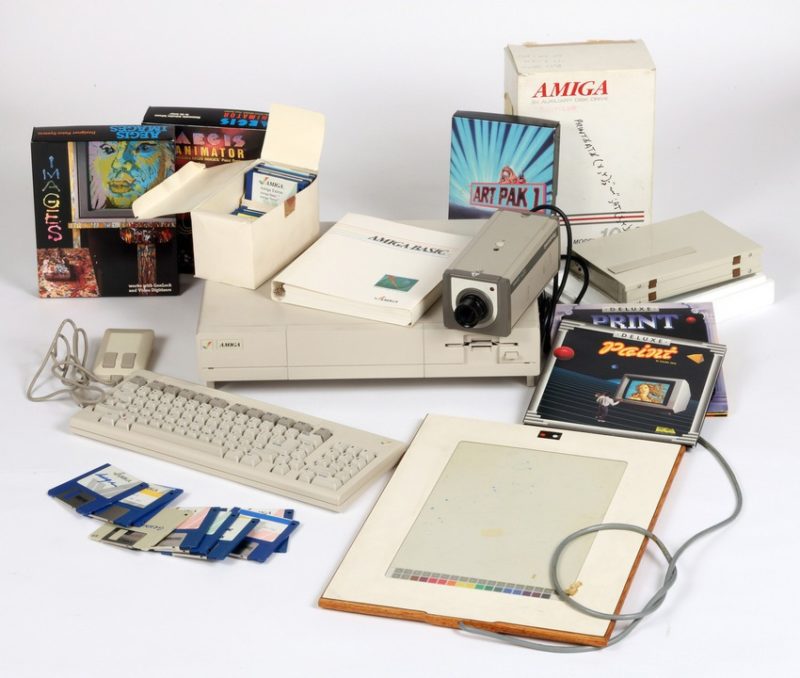
Commodore Amiga computer equipment used by Andy Warhol 1985-86
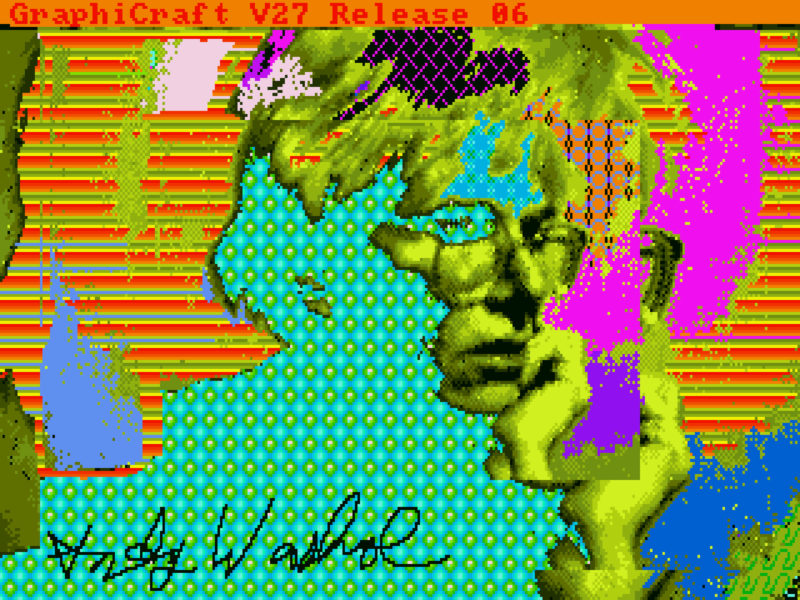
Andy Warhol, Andy2, 1985
The Andy Warhol Museum, Pittsburgh; Founding Collection, Contribution The Andy Warhol Foundation for the Visual Arts, Inc.
© The Andy Warhol Foundation for the Visual Arts, Inc.
From disk 1998.3.2129.3.4
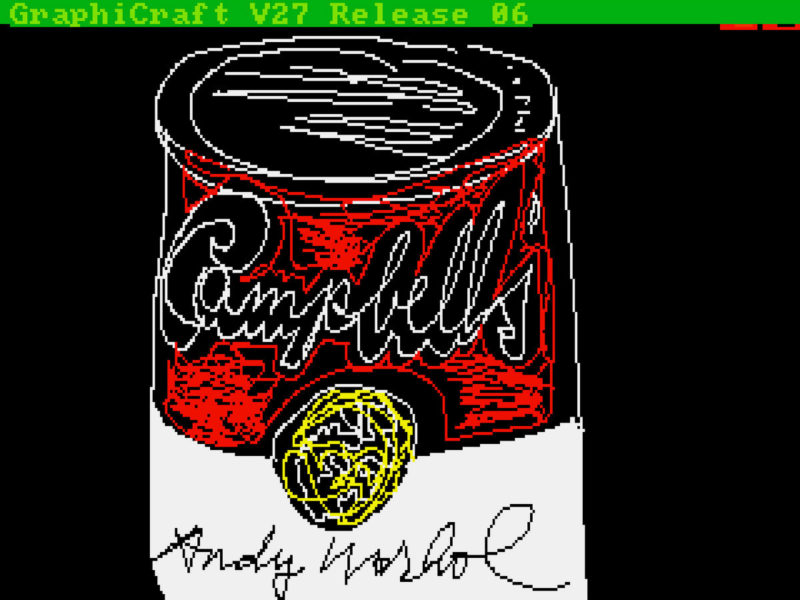
Andy Warhol, Campbells, 1985
The Andy Warhol Museum, Pittsburgh; Founding Collection, Contribution The Andy Warhol Foundation for the Visual Arts, Inc.
© The Andy Warhol Foundation for the Visual Arts, Inc.
From disk 1998.3.2129.3.22
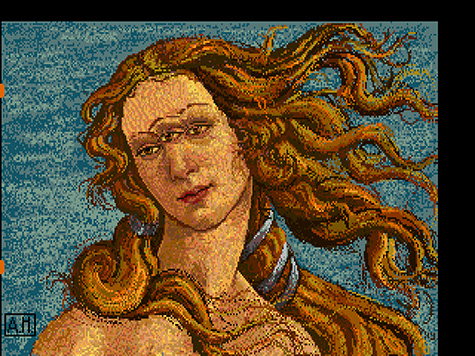
Andy Warhol, Venus, 1985
The Andy Warhol Museum, Pittsburgh; Founding Collection, Contribution The Andy Warhol Foundation for the Visual Arts, Inc.
© The Andy Warhol Foundation for the Visual Arts, Inc.
From disk 1998.3.2129.3.22
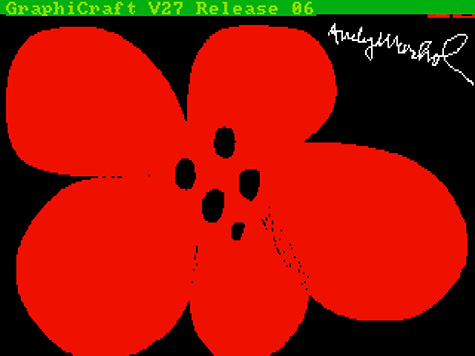
Andy Warhol, Flower, 1985
The Andy Warhol Museum, Pittsburgh; Founding Collection, Contribution The Andy Warhol Foundation for the Visual Arts, Inc.
© The Andy Warhol Foundation for the Visual Arts, Inc.
From disk 1998.3.2129.3.22
In the early 1980s, home computers were a competitive market and technology companies were vying for marketing and branding opportunities. Commodore and Apple were two companies that lead the race. Although Warhol signed with Commodore first, he met Steve Jobs, the founder of Apple, Inc., a year earlier at a birthday party for Sean Lennon, the son of musician John Lennon and artist Yoko Ono.
Warhol recorded his first encounter with Jobs in his Diaries. On Tuesday, October 9, 1984, Warhol writes:
. . .there was a kid there setting up the Apple computer that Sean had gotten as a present, the Macintosh model. I said that once some man had been calling me a lot wanting to give me one, but that I’d never called him back or something, and then the kid looked up and said, ‘Yeah, that was me. I’m Steve Jobs.’ And then he gave me a lesson on drawing with it…I felt so old and out of it with this young whiz guy right there who’d helped invent it.
Although Warhol never produced drawings on the Apple computer, he used Apple’s logo in a portfolio of prints in 1985. The series, called Ads, also included trademarks for Chanel, Paramount, and Mobil.

